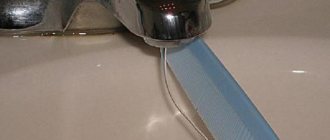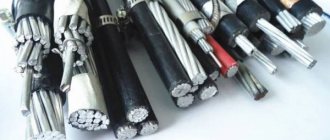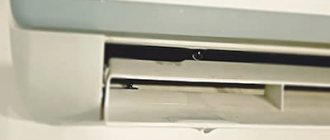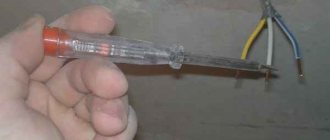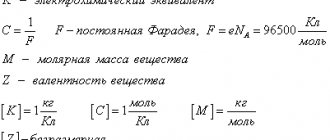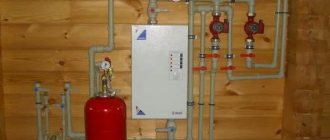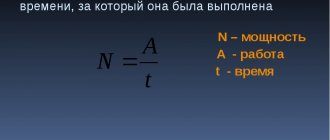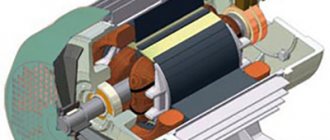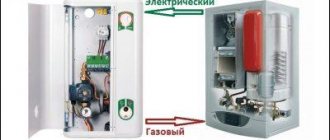In certain industries, extremely stringent requirements for the quality of water treatment are applied. In particular, in microelectronics and pharmaceuticals, one of the most important indicators is the electrical conductivity of water. The ability of a specially prepared liquid to conduct current and the magnitude of its resistivity affect the efficiency of some technological processes.
The physical property of water - conductivity is regulated for such industries by the requirements of current regulatory documents. The article discusses the main factors that determine the level of its resistance, units, methods and instruments for measurements. The reader is offered an overview of the most effective ways to reduce these indicators using professional equipment.
What is the electrical conductivity of water
The most common liquid on Earth has the ability to conduct direct or alternating current.
The electrical conductivity of water is a quantitative characteristic of this property, which is determined by the presence of charged particles - positive and negative ions. The latter include chemical elements that are part of the following organic and inorganic compounds:
- Alkalis.
- Salts of alkaline earth and other metals, primarily chlorides and sulfides (sulfates).
- Carbonates.
This indicator is higher, the more positively charged ions - cations - and negatively charged ions - in the liquid. Those. electrical conductivity is directly related to the salinity content of water. The specific electrical conductivity of water is inversely related to the resistance of water and is determined for the volume of liquid that is located in the gap between two electrons with an area of 1 cm2. The latter are located at a distance of 1 cm from each other.
Electrical conductivity standards for natural water
In the Russian Federation, requirements for water treatment quality parameters are regulated by state standards and other documents. Specific indicators of electrical conductivity of water for various purposes are established by the following regulations, depending on the degree of purity:
- GOST 52501-2005. For laboratory tests - no more than 0.1 and 1.0 µS/cm for the first and second degrees, respectively.
- GOST 6709-97. For distilled water - less than 5*10-4 S/cm.
- FS 2.2.20020.15. Purified water for pharmaceutical purposes - not higher than 4.3 µS/cm.
- FS 2.2.0019.15. Water for preparing medicinal solutions and injections.
Strict technological standards for electrical conductivity for water are established at enterprises that produce components for microelectronics. The quality of liquids used in production processes is controlled by specialized laboratories and the use of sophisticated instruments according to approved methods.
Does it conduct electricity or not?
Theoretically, distilled water is not a substance that conducts electricity. There are no mineral salts or additional impurities in an ideally clean liquid medium .
There are practically no free ions in it. In such an environment there are no suitable conditions for their interaction.
In practice, it is not possible to completely remove all salts and impurities from an aqueous solution . Their concentration in it is significantly lower than in ordinary water.
But such a purified environment still contains a certain amount of substances that can transmit electricity. Such a liquid medium can be a weak conductor.
Electrical conductivity indicators: main factors
Natural bodies of water contain many soluble impurities of inorganic origin. They determine the basic physical properties of water, including electrical conductivity. The value of the latter is directly dependent on a number of factors:
- Concentrations of charged particles.
- Composition and nature of ions.
- Liquid temperatures.
The greatest influence on the electrical conductivity of water is exerted by hardness salts, more precisely sodium (Na+), potassium (K+) and calcium (Ca2+) cations, as well as chlorine anions (Cl-) and acid groups (SO42- and HCO3-). The presence of di- and trivalent iron ions (Fe2+, Fe3+), as well as manganese (Mn2+) and aluminum (Al3+) in the liquid in small concentrations has virtually no effect on the resistivity.
With increasing temperature, the electrical conductivity of water increases significantly due to an increase in the velocity of ions, a decrease in their solvation and a decrease in viscosity. In this case, an increase in conductivity associated with an increase in the concentration of cations and anions is observed only up to a certain limit. Having reached a maximum, it begins to decrease, which is due to increased interaction of charged particles with each other and a decrease in the degree of dissociation.
Determination of water electrical conductivity indicators
The level of resistance of a liquid to electric current is measured using special instruments. To quantify the level of electrical conductivity of water, the units of measurement established by the international SI system are used. The use of unified methods and standards in this area simplifies laboratory research and understanding of the results obtained.
Units
In our country, a special unit is used to measure water conductivity - S/m (Siemens per meter). It relates to resistivity as 1 S/m = 1/1 Ohm/m. In this case, the described indicator for natural water is:
- For fresh rivers: from 50 to 1500*10-6cm/m.
- For distilled water: from 0.5 to 5*10-6cm/m.
- For ultrapure deionized: from 0.1 to 0.2*10-6S/m.
For convenience, a derivative is used as a unit of electrical conductivity of water, which is one ten-thousandth of the base and written as µS/cm.
The specific resistance of a liquid is determined to a large extent by the level of mineralization. In the USA, the TDS value, which indicates the content of soluble salts, is used instead of µS/cm to measure water conductivity. This figure is calculated in parts per million and written as ppm. To convert this unit to an international one, a correction factor is used.
Measurement methods and instruments used
In our country, the specific conductivity and pH of a liquid are determined electrometrically. In order to accurately calculate the electrical conductivity of water, specialists use the methodology established by RD 52.24.495-2005. This document will apply to surface water supplies and wastewater.
To measure the electrical conductivity of water, a calibrated conductometer with stainless steel electrodes is used. To calibrate the device, a standard solution with a value of at least 1500 µS/cm is used, and the deviation from the nominal value should not exceed 2%.
During measurements of the specific electrical conductivity of water, its temperature is recorded, and the desired value is determined using special tables. If devices with temperature compensation are used, the true value immediately appears on the screen, which greatly simplifies the process.
Is the distillate a transmitter or a dielectric?
Since the solution has a low electrical conductivity and a fairly high level of insulating permeability, it is a dielectric.
That is, such a mixture does not conduct electric current well or does not conduct it at all.
The fact that a liquid is considered a dielectric is influenced by the absence of salts in it . They are the ones who improve conductivity.
The lack of salts is associated with the absence of free ions in solutions. They cannot transmit discharges. And the molecules themselves are considered weak conductors.
You will find a lot of useful and important information about distilled water in this section.
Reducing the electrical conductivity of water: professional methods
Modern water treatment systems provide the required quality indicators. In order to reduce the electrical conductivity of water in such installations, the following treatment methods are used:
- reverse osmosis;
- electrodeionization;
- ion exchange.
The listed technologies differ in their level of efficiency and technical and economic parameters. The choice of one method or another is made taking into account the water conductivity indicators required by the customer. Let's take a closer look at the capabilities and features of each of the presented methods.
Reverse osmosis
The essence of the method is to use semi-permeable membranes to obtain highly purified permeate. During the process of reverse osmosis, the conductivity of water decreases significantly due to its deep demineralization. Modern industrial reverse osmosis installations separate up to 99.9% of all impurities, including hardness salts. Such systems have a capacity of up to 1000 l/h.
The electrical conductivity of osmotic water, depending on the model of the installation used, ranges from 0.1 to 5 µS/cm. Permeate without additional processing belongs to the first degree of purification, and can be used in medicine, pharmaceuticals and other high-tech industries. Reverse osmosis plants are currently the main sources of purified water.
Electrodeionization
Technologies for deep purification of liquids from salts are currently being developed and implemented. The necessary physical properties of water, including electrical conductivity at a level of 0.055 μS/cm, are provided by the electrodeionization method. Water treatment using it is carried out in three stages:
- Electrodialysis. The removal of cations and anions from water is carried out using con-selective membranes, which are located in front of the electrodes. A constant voltage is applied to them, ensuring the movement of charged particles.
- Ion exchange. To speed up the process, a composition of special high-molecular resins consisting of cation exchangers and anion exchangers is placed in the chamber. Polymers have a porous structure and absorb charged particles and replace them.
- Regeneration. Under the influence of direct current, water molecules dissociate, and the resulting ions ensure the restoration of the exchange properties of the filler.
Purified and deionized water has extremely low conductivity, which allows it to be used as solvents for medications. Industrial electrodeionization units have high performance and can be used in thermal power plants.
Ion exchange
This technology provides effective removal of charged particles from liquids at relatively low cost. A significant reduction in the ionic conductivity of water is achieved through the use of special substances: ion exchangers or cation exchangers. They are produced in the form of fillers for ion exchange systems - mixed-action filters.
Ion exchangers are produced on the basis of network polymers that have a microporous or network structure. The material has a covalent bond with ionic groups, which, during the process of dissociation, form a pair of free and fixed ions with opposite charges. The latter is fixed to the polymer.
As a result of the ion exchange process, the electrical conductivity of water and the level of its mineralization are noticeably reduced. Charged particles from the liquid diffuse first to the surface and then into the sorbent. Over time, the ability of the backfill to absorb ions from the liquid decreases and to restore it, regeneration is carried out using working solutions.
Electric shock protection
Modern electrical appliances are designed to be as safe as possible for humans. The wires and all parts of the device are placed in an electrically insulating shell. But still, in some cases, electricity can cause harm. If the insulation is damaged and a current breakdown occurs on the device body, you can get a serious shock. Such impacts lead to injury and sometimes death. Sometimes injury occurs not from the current itself, but from its consequences. The person is jerked back, thrown back, and hits their head or other part of the body on a hard object.
That is why it is important to purchase only high-quality household appliances and install an RCD (residual current device) in the house. You should never grab wires with your bare hands without being 100% sure that they are de-energized.
You should handle capacitors with care, and before using even a completely familiar electrical appliance, it is advisable to read the instructions
Specific electrical conductivity in water
Diasel Engineering offers effective technical solutions to reduce the electrical conductivity of water. The company supplies equipment for reverse osmosis, electrodeionization and ion exchange systems. Our specialists install water treatment plants, carry out the necessary commissioning work and provide their maintenance.
Reducing the electrical conductivity of water to the required levels is an extremely difficult task and requires the involvement of professionals to solve it. NPK Diasel LLC invites enterprises in need of deep cleaning units to cooperate. Comprehensive solutions to water treatment problems are our main specialization.
